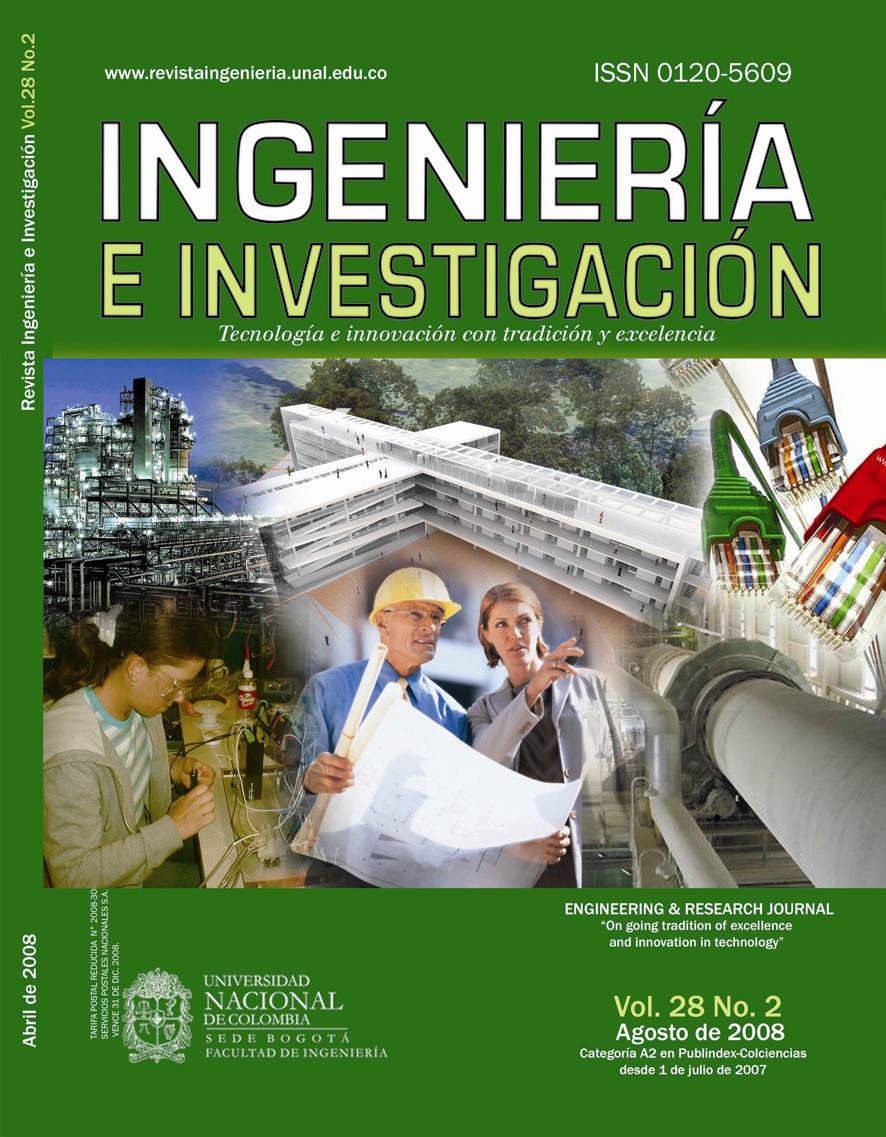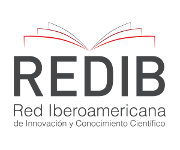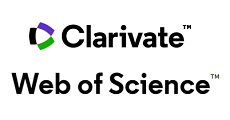Optimum control criteria for an electric driver for dynamic systems
Accionamiento eléctrico de sistemas dinámicos a través de criterios de control óptimo
DOI:
https://doi.org/10.15446/ing.investig.v28n2.14894Keywords:
optimal control, absolute value criteria, symmetric optimum, DC motor (en)control óptimo, criterio calor absoluto, óptimo simétrico, motores DC (es)
Downloads
This work was aimed at optimizing control parameters for variable speed control and post-tensioning torque by controlling the current of DC motors forming part of a dynamic system (in a paper-making production line) by designing controllers based on absolute value and optimal symmetry criteria. A mathematical model representing an electric drive system for controlling DC motor speed and torque in a paper-rolling system was defined, a control algorithm adjusting the parameters was designed and an electric drive system simulated. The methodology consisted of a literature search and a field study for defining the model and establishing the parameters to be simulated, thereby presenting an analytical and descriptive project. The results led to observing the efficiency of the controllers so designed and the overall drive system for which speed and current (power) continue being the reference signal, leading to the conclusion that the criteria selected for control design were suitable and representing an input in developing applications for monitoring dynamic electric drive systems.
Este trabajo tiene como enfoque el estudio de la optimización de los parámetros de control de la velocidad variable y el control del par de tensado del producto a través de control de corriente de los motores de corriente continua que forman parte del sistema dinámico –en una línea de producción de papel– realizando un diseño de los controladores basados en los criterios de valor absoluto y el criterio óptimo simétrico. Para ello se plantearon como objetivos la definición del modelo matemático que representa el sistema de accionamiento eléctrico para el control de la velocidad y par de los motores DC del sistema de enrollado de papel, el diseño de un algoritmo de control ajustando los parámetros necesarios y la simulación del sistema de accionamiento eléctrico. En este sentido, la metodología seguida consistió en realizar una investigación documental y un estudio de campo para definir el modelo y establecer los parámetros a simular, presentándose como un proyecto analítico y descriptivo. Los resultados obtenidos permiten observar la eficiencia de los controladores diseñados y del sistema de accionamientos en general, para el cual las variables velocidad y corriente siguen la señal de referencia, permitiendo concluir que los criterios seleccionados para el diseño del control han sido apropiados, y representando un aporte en el desarrollo de aplicaciones de control de sistemas dinámicos para accionamientos eléctricos.
References
ASEA Industry., Drive systems for winders supercalanders and coatin machines., AP 41-103 E, Edition 1.
ASEA Industry., Speed-Controlled drive system with DC motor., ASEA DRIVES A 07-7001 E, Edition 1
Hou, Y., Gao, Z., Jiang, F., Boulter, B. T., Active Disturbance Rejection Control for Web Tension Regulation Department of Electrical and Computer Engineering Cleveland State University., Cleveland Ohio, 44115.
Krishnan. R., Electric motor drives., Prentice Hall, 2001.
Sandoval, C., Velazco, K., Simulación en ambiente Matlab/ Simulink del control automático de velocidad y par de tensado de una planta rebobinadora de papel., Revista Ingeniería UC, Vol.9, No. 2. Dic. 2002, pp. 42-47.
Szklarski, L, Jaracz, K, Y., Horodecki, A, Electric drive system dynamics., 1996.
How to Cite
APA
ACM
ACS
ABNT
Chicago
Harvard
IEEE
MLA
Turabian
Vancouver
Download Citation
License
Copyright (c) 2008 Cecilia E. Sandoval Ruiz, Katerine C. Velazco S., José Gregorio Díaz P.

This work is licensed under a Creative Commons Attribution 4.0 International License.
The authors or holders of the copyright for each article hereby confer exclusive, limited and free authorization on the Universidad Nacional de Colombia's journal Ingeniería e Investigación concerning the aforementioned article which, once it has been evaluated and approved, will be submitted for publication, in line with the following items:
1. The version which has been corrected according to the evaluators' suggestions will be remitted and it will be made clear whether the aforementioned article is an unedited document regarding which the rights to be authorized are held and total responsibility will be assumed by the authors for the content of the work being submitted to Ingeniería e Investigación, the Universidad Nacional de Colombia and third-parties;
2. The authorization conferred on the journal will come into force from the date on which it is included in the respective volume and issue of Ingeniería e Investigación in the Open Journal Systems and on the journal's main page (https://revistas.unal.edu.co/index.php/ingeinv), as well as in different databases and indices in which the publication is indexed;
3. The authors authorize the Universidad Nacional de Colombia's journal Ingeniería e Investigación to publish the document in whatever required format (printed, digital, electronic or whatsoever known or yet to be discovered form) and authorize Ingeniería e Investigación to include the work in any indices and/or search engines deemed necessary for promoting its diffusion;
4. The authors accept that such authorization is given free of charge and they, therefore, waive any right to receive remuneration from the publication, distribution, public communication and any use whatsoever referred to in the terms of this authorization.



























